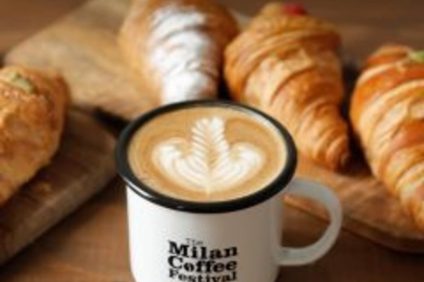When we think of Venice, vegetable gardens and gardens are one of the last things that can come to our mind. However the green in the lagoon city does exist, even on the island of Venice itself. Today we bring you to know the mystical garden of the Discalced Carmelite fathers, a stone's throw (almost literally) from the Santa Lucia station.
The Discalced Carmelites
The Discalced Carmelites have distant origins in time and space. In fact, the order finds its roots at the end of the XNUMXth century in the Holy Land, on the slopes of Mount Carmel, where they erected the first church of the Blessed Mary of Mount Carmel. The "qualification" of Scalzi derives from their ancient custom of wearing sandals without socks.

With the fall of the Latin kingdom in 1291, the Order was completely uprooted from the Holy Land: the convents were lost and the friars had to emigrate to Europe. In 1521, however, the female order was born in Avila (Spain) thanks to Teresa.
The arrival of the Discalced Carmelites in Venice
In Venice the Discalced Carmelites settled in 1633 and shortly afterwards the Senate granted them the construction of a church and a convent. It was their garden, however, that made them particularly famous in Venice (and beyond) as they cultivated lemon balm there. It is an aromatic plant from which from 1710 (and still today) they made the so-called "lemon balm water”, Also cited in Goldoni's plays as a very popular remedy.
- the church of Santa Maria di Nazareth
The Scalzi bridge is one of the three pedestrian links on the Grand Canal and the facade of the church of Santa Maria di Nazareth dominates it from the Cannaregio side. It is a church built between 1649 and 1680 based on the architect's project Baldassarre Longhena, also author of the Health Church.

This is one of the few Venetian facades made entirely of Carrara marble, a material that (unlike the Istrian one with which Venice is built) is greatly affected by the lake environment. For this reason, for some years also the façade has been the subject of restoration and has been brought back to view only in recent times. The church is a splendid example of Baroque architecture and collects works by important artists including Gianbattista Tiepolo, Ettore Tito and Heinrich Meyring. In your hasty coming and going from Venice to the Santa Lucia station, take a moment to enter and admire it!
The drawing of the mystical garden
The church is part of a complex that also includes the convent of the fathers and the vegetable garden, called brolo. The orchard of the convent was the subject of a important restoration project conducted in 2014 by the Veronese architect Giorgio Forti. This took place with the support of the Consorzio Vini Venezia, which wanted to focus on recovery of biodiversity lagoon vineyard. In it we find some formal elements typical of the Venetian garden. They are: the well, the caesura (which divides the courtyard from the garden itself), the parterre, the perspective axis and the construction according to a geometric pattern (typical of the Renaissance garden), the water door (i.e. the landing from the canal). The garden is divided into seven large sections but also hosts other smaller flower beds full of plants and trees, for example the avenue covered with white roses that leads to the chapel dedicated to the Virgin.
The seven flowerbeds of the mystical garden
The brolo is divided into seven large flower beds: the grassy lawn, the herb garden (hortus simpleum), the vegetable garden (hortus holeaurium), the vineyard, the orchard (hortus pomarium), the olive grove (or "garden of Gethsemane") and the wood. The vegetable garden was and is of course important for the internal subsistence of the friars, while that of medicinal herbs was an equally significant element in the convents since in the Middle Ages the friars were also repositories of medical knowledge. In the vineyard the native varieties of the lagoon such as Marzemino, Malvasia and Raboso have been recovered, as well as in the orchard almost lost varieties of fruit are rediscovered.

The mystical garden: curiosity and symbolism
mystique we mean the contemplation of the dimension of the sacred which involves direct experience. A mystical garden then proposes itself to induce contemplation and the approach to God. The brolo of the Discalced Carmelites wants stimulate the senses of the visitor: the lost flavors, the smells of medicinal herbs, the sounds of birds, the colors of plants and flowers and the perception of perspectives, the contact with the gravel and the foliage of the trees. Also there numerologia plays an important role in garden design. In fact, numbers of great religious importance such as 3 and 7 are recurrent. Furthermore, there are numerous hidden biblical references in the small details. For example in the symbolism of the passion flower, in the choice of tree species, in the number of olive trees and much more. A garden to be discovered as well as to be enjoyed, so we advise you to book a guided tour through the dedicated website!





